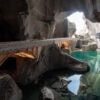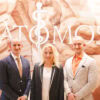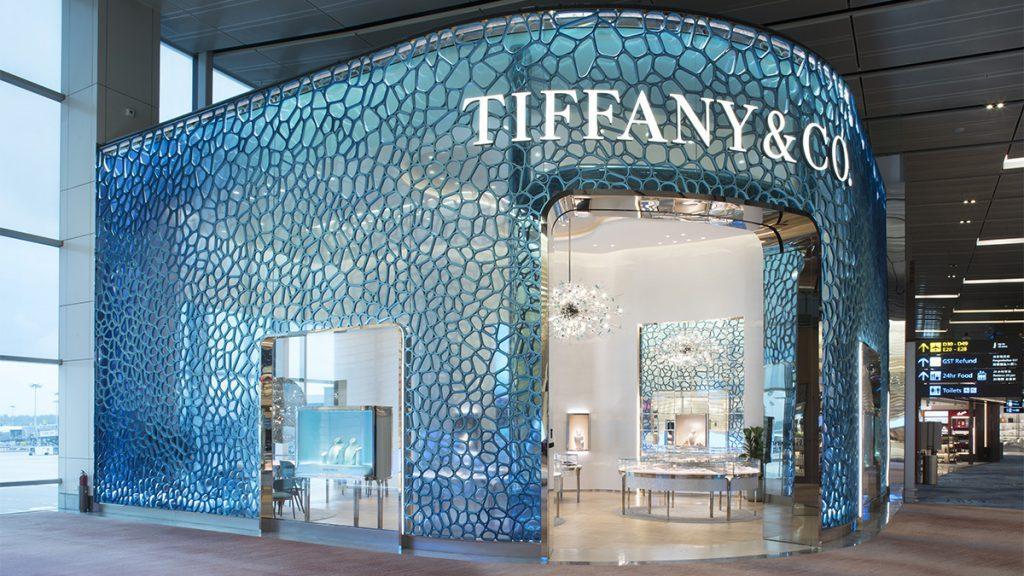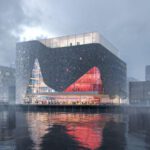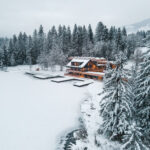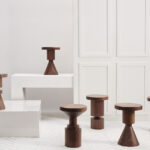The fact that a healthy environment is increasingly becoming a luxury is something that even providers of luxurious gems are reluctant to accept. Tiffany’s therefore had a façade made from plastic waste from the sea designed for its store at Changi Airport. Designed by MVRDV, 3D-printed and fascinating.
When Audrey Hepburn alias Holly Golightly, dreamed of a life of luxury in Breakfast at Tiffany’s the world looked very different. In 1961, environmental pollution and climate change were hardly an issue. The film adaptation of the Truman Capote novel went down in history. And the legendary jewelry company Tiffany & Co. has a global network of over 300 stores today. Tiffany’s has long since shown that “luxury” no longer just means gold and diamonds with the façade of a new store at Singapore’s Changi Airport: built from recycled plastic waste, the marvel is intended to underline the company’s commitment to sustainability.
Artwork made from 3D-printed waste
The gracefully extravagant façade was designed by the top Dutch firm MVRDV. It is made of unusual materials for high-end jewelry stores and uses state-of-the-art technology: plastic waste “fished” from the sea was recycled and 3D printed to create an elegant eye-catcher. A complex undertaking for which the architects collaborated with the Amsterdam-based company Aectual and the Milan-based engineering firm BUROMILAN.
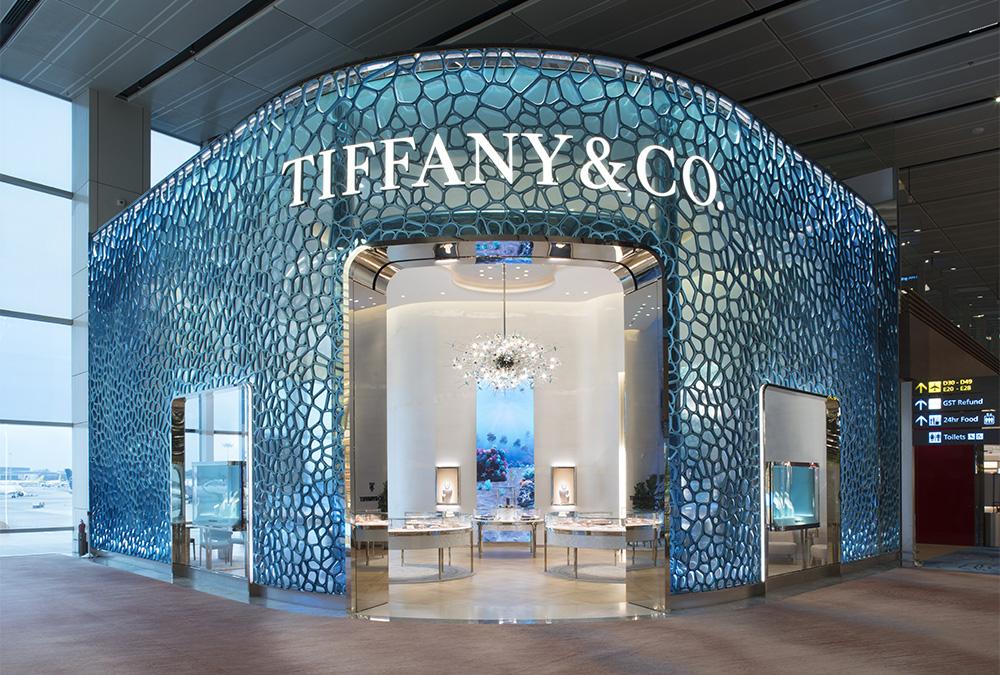
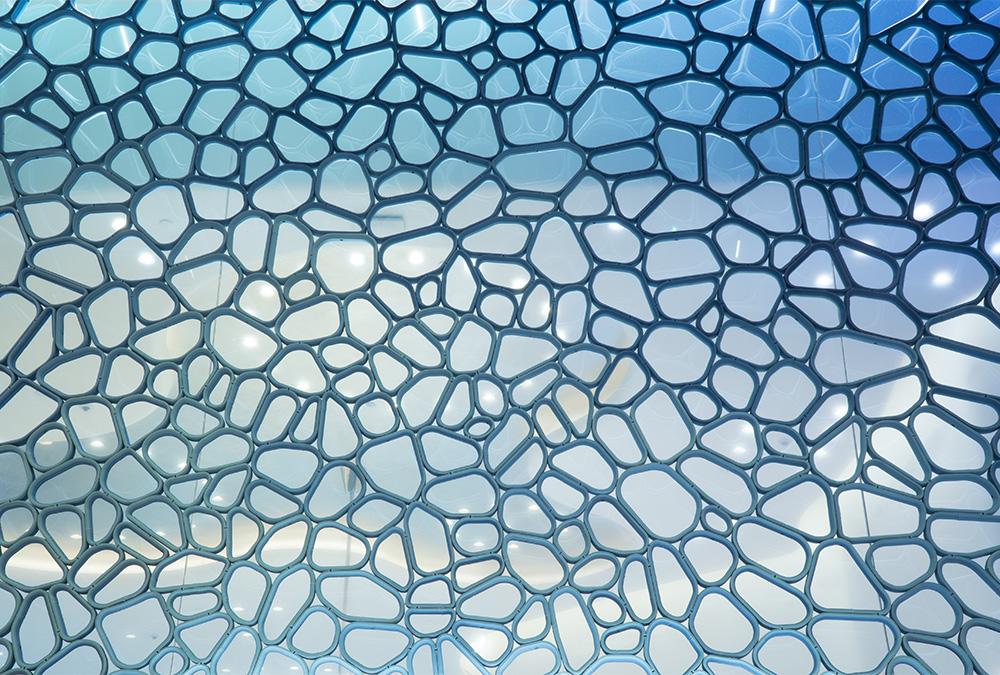
In developing the design, MVRDV defined a series of characteristic design features that reflect Tiffany’s identity and history. The exterior of the store now shines in the unmistakable Tiffany Blue®. In other words, the bright blue-turquoise hue of the eggshells of American robins, which has always been associated with the jewelry company founded by Charles Tiffany and John Young in New York in 1837.
Homage to Tiffany’s history
The designers were also inspired by Louis Comfort Tiffany’s glass art, which became famous in the late 19th century and is still coveted today. A legacy that also shapes the look of the entire store with allusions to flora and fauna.
Coral as a design model
MVRDV found inspiration for the thematic “anchor” of the Designs in the local environment and Singapore’s coral reefs: the team designed a kind of shell based on the patterns of the coral species. This adorns the façade of the store with an organic, cell-like decor. Behind it is a layer of glass that has been screen-printed with a color gradient that transitions from Tiffany’s characteristic shade to a deep blue. The latter is intended as a reference to Singapore’s marine environment.
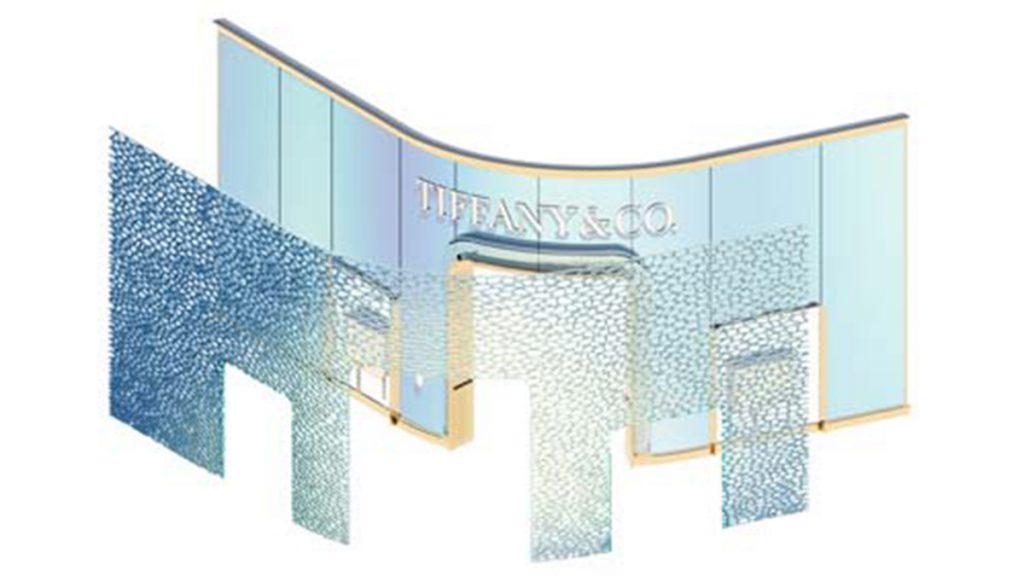
The specialized technology task force MVRDV NEXT helped to refine the coral-like shell. The team’s specially developed concept ensures that the Design can withstand a wide range of loads.
Luxury made from fabric that plagues the oceans
The 3D printing experts at Aectual developed the process for producing the 50-millimeter-thick shell. The material: recycled plastic, including from processed fishing nets. An unusual source of supply that also helps to protect the oceans from which the base material originates: A fascinating construction was created from waste that would otherwise pollute the oceans, making the façade of the Tiffany’s store a feast for the eyes.
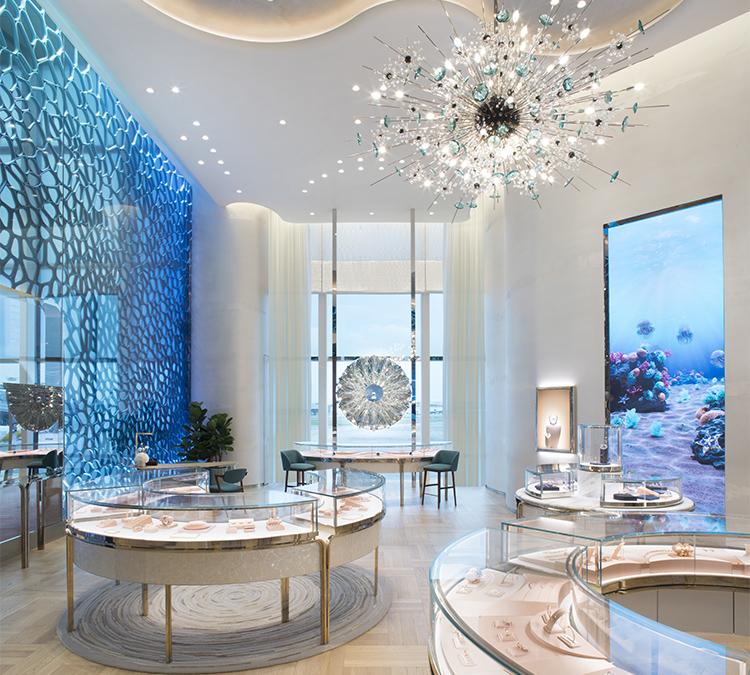
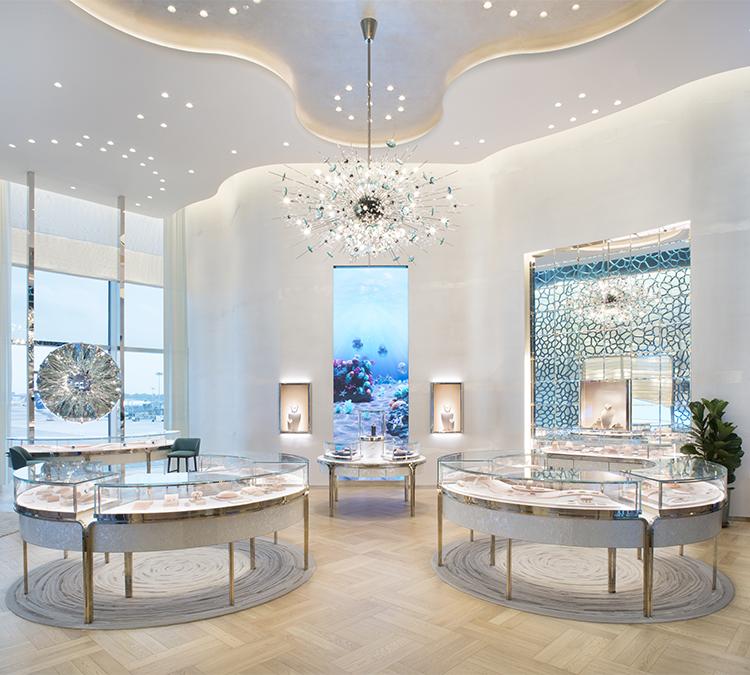
The MVRDV architects cite the need to comply with the strict fire protection regulations of an airport as a particular challenge along the way. A problem that BUROMILAN solved by adding a chemical substance that is also produced from seawater.
Multidimensional play of colors
The color gradient of light and dark blue is repeated several times in the 3D-printed part of the Designs: around the entrances of the Tiffany’s store, the shell is light blue at the front and dark blue at the back. Towards the outermost corners of the façade, this look is gradually reversed – creating a color gradient in all three dimensions.
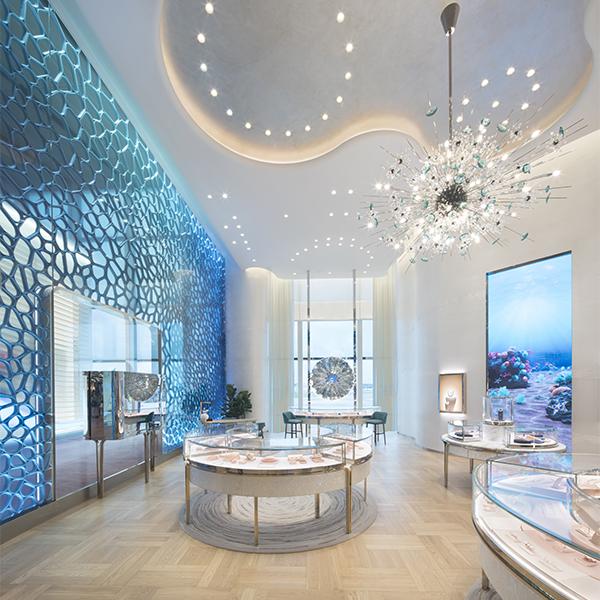
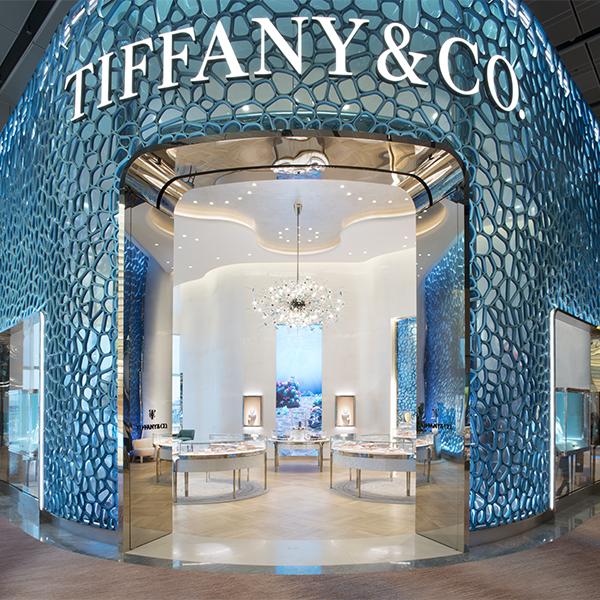
It is well known that impressive things can now be created with 3D printing. From individual houses to entire housing estates, such as the „Wolf Ranch“ project built by ICON. But also the finest works of art, such as the altar of the St. Laurentius parish church in Altmühldorf, Bavaria, which was created by artists Corbinian Böhm and Michael Gruber with architect Oliver Tessin.
Luxury & Engagement at Tiffany’s
However, what the Tiffany’s store in the Piazza Garden at Changi Airport now presents is more than just an aesthetic hi-tech wonder. The beautiful façade printed from plastic waste is a statement for sustainability with which a legendary luxury jeweler wants to set an example. In times when a healthy environment is increasingly becoming a luxury – and many people have long dreamed of it rather than gold and diamonds.
Text: Elisabeth Schneyder
Bilder: MVRDV / Courtesy of Tiffany&Co.



